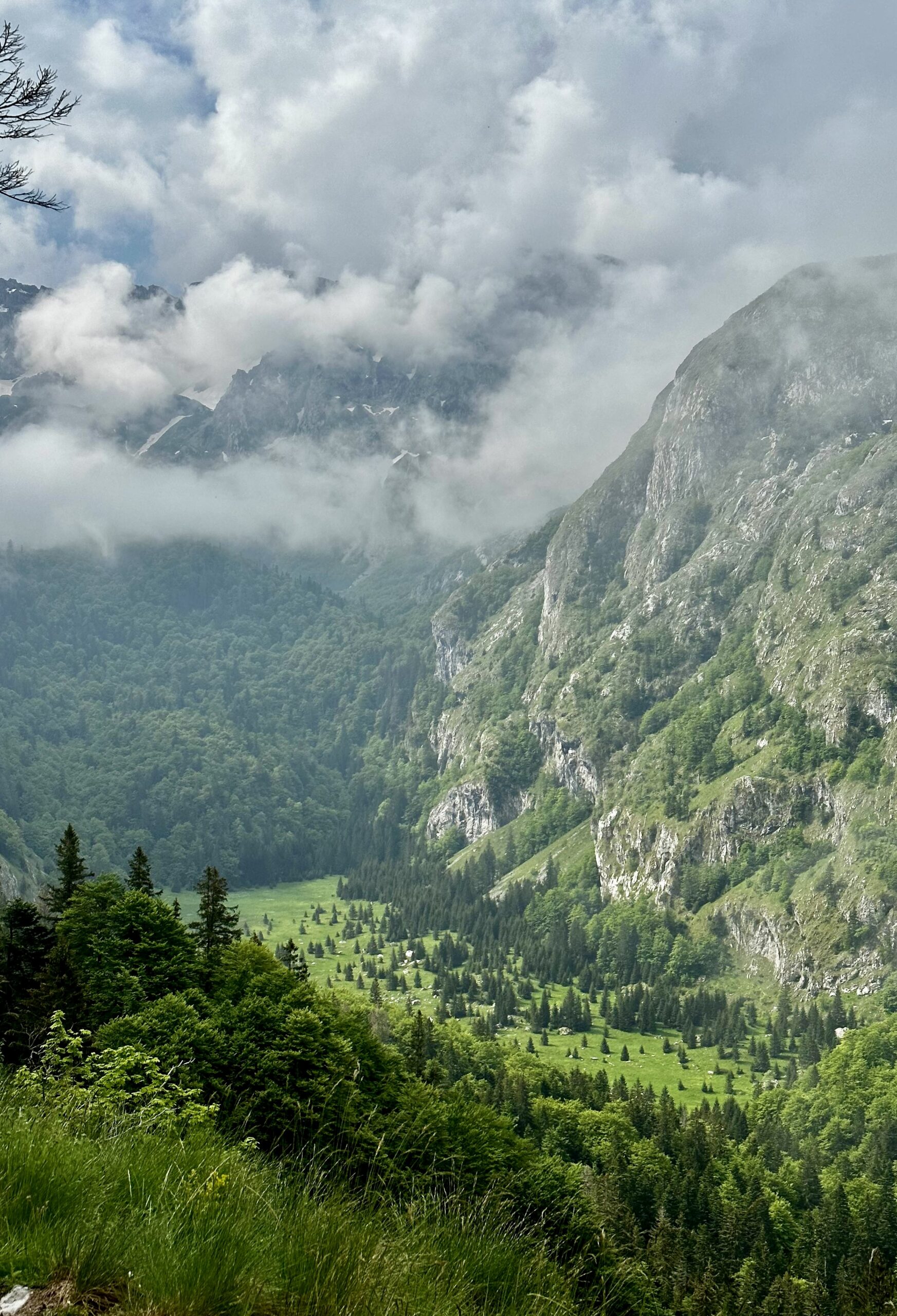
Sutjeska National Park, located in Republika Srpska near the border to Montenegro, is Bosnia & Herzegovina’s oldest and largest national park. The park is spectatular with dramatic landscapes and towering peaks, I can’t believe that so few tourists make it to this part of Bosnia! The park also has blend of rich history, where important battles have been fought during WW2, the most famous being the Battle of Sutjeska. The park is also home to the country’s highest peak in Bosnia & Heregovina, Maglić Mountain, which stands at 2,386 meters above sea level. The Sutjeska National Park is a fascinating off-the-beaten-path destination in Europe and should not be missed on your trip to Bosnia & Herzegovina!
Visiting the Battle of Sutjeska Memorial, hiking to Lake Trnovačko or to the Peak of Bosnia (Mt. Maglic at 2 386m) are the best things to in Sutjeska National Park. Driving is the most convenient way to reach the park. From Sarajevo or Mostar, it’s approximately a 2-hour drive.
What Is The History Of Sutjeska National Park?
One of the most significant historical events related to Sutjeska National Park is the Battle of Sutjeska, which took place in 1943 during World War II. The Battle of Sutjeska (a.k.a Operation Schwarz) was fought between the Axis forces and the Yugoslav Partisans, led by Josip Broz Tito. The Axis forces launched an offensive to destroy the Partisan units in the region, but the Partisans managed to withstand the attacks despite being massively outnumbered although at a heavy loss of life, and ultimately escape encirclement. The battle was a significant victory for the Partisans and is considered one of the most important battles of World War II in Yugoslavia.
In 1962, the park was established making it the largest and earliest declared National Park in Bosnia & Herzegovina, although the declaration was made with more the historical battles in mind rather than nature conservation.
Biologically, the Sutjeska National Park is home to a range of wildlife, including the brown bear, wolf, and chamois. Sutjeska National Park also contains one of the last two remaining primeval forests in Europe, called Perućica, which has been protected as a strict nature reserve. Furthermore, the landscape is unique for the region and you will notice it as soon as you arrive at the National Park, when the landscape becomes significantly more dramatic.
What is There to Do?
1. Hike To The Top of Bosnia (Mt. Maglic)
Mount Maglic is the highest peak in Bosnia and Herzegovina at 2386m above see level. The hike to the top is challenging and takes around 3 hours one way from a place called Prijevor (at least on google maps). In order to get there, you need to drive on a small dirt up the mountain. Its only about 20 km to reach the Prijevor with the road, however due to the poor condition of the road it will take you around 1 hour and 30 minutes to reach the top.
Here, I highly recommend a 4×4 car, however I managed to do it with a Skoda Fabia, but you need to go really slow since the road is in awful condition and you might risk poping your tires. The dirt road up the mountain starts here, and in the first part of the road you will wonder what all the fuss was about, but then after a few kilometers the bad part will start. Note: there is a small house which usually collects a small entrance fee when going up the road, so be prepared with some coins, however when I passed by there was no one there.
When you reach the top, you will probably see other cars parked there and you can park yours on the grass plain. From there the path to Maglic peak is marked out. As you get closer, the trail starts to get rockier and you will notice a Via Ferata cable installed in the mountain, which is supposed to make it easier and safer for mountaineers. The hike is not recommended if you are afraid of heights.
The name “Maglić” comes from the Serbian/Croat word “magla,” which means “fog” or “mist” and its not by accident that it is called that. The area is often foggy and has a lot of rain and I was adviced not to make a summit attempted, should it not be clear sky. I decided not to go for the summit since it was both raining and misty at the time I was there. Instead, me and my wife decided to do the hike to Lake Trnovačko (described below), which is a great alternative, should the weather be bad.
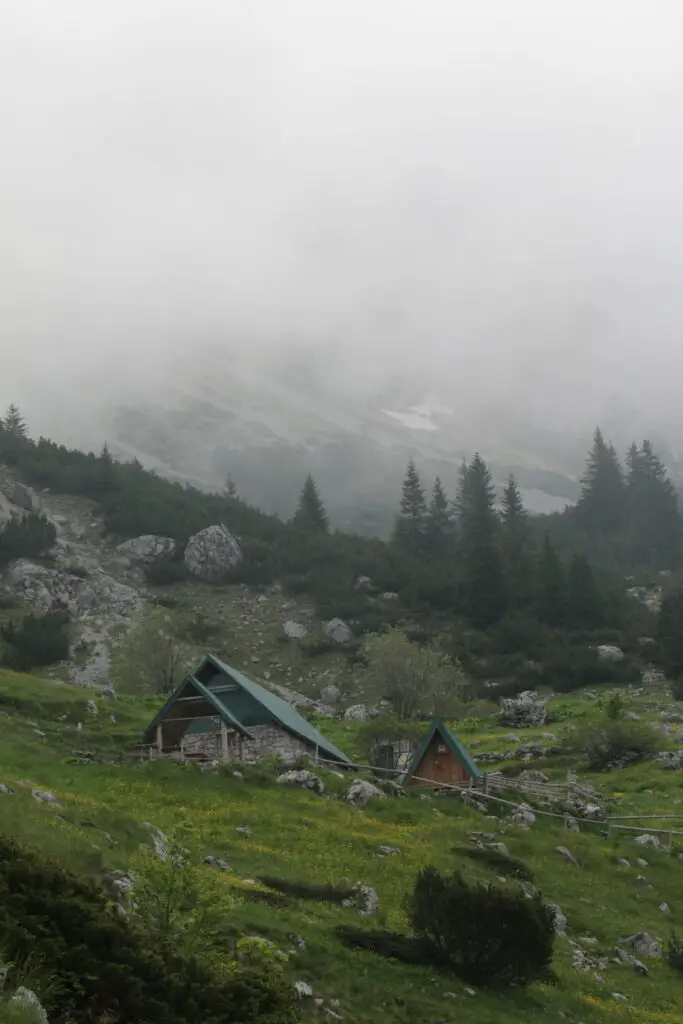
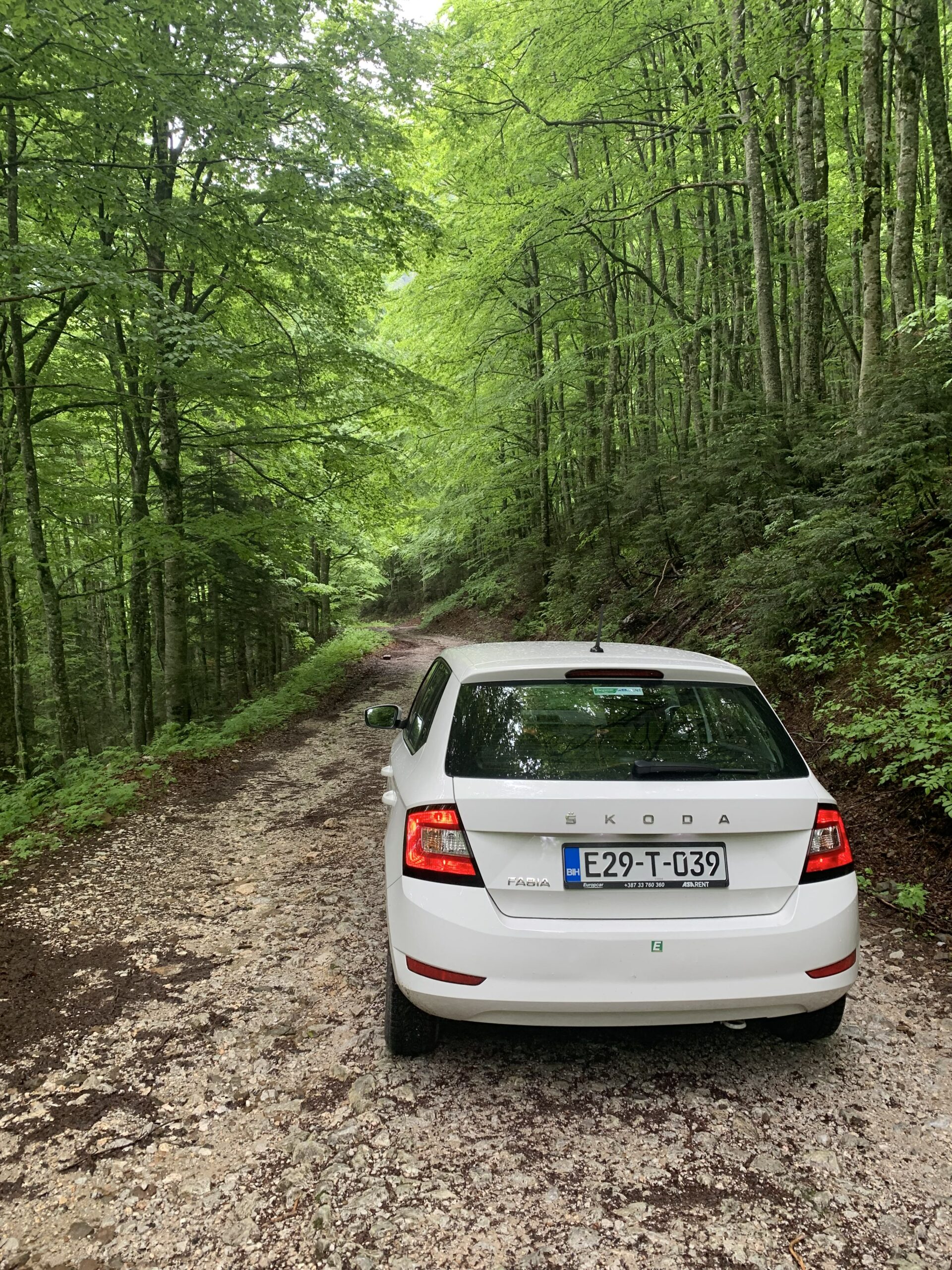
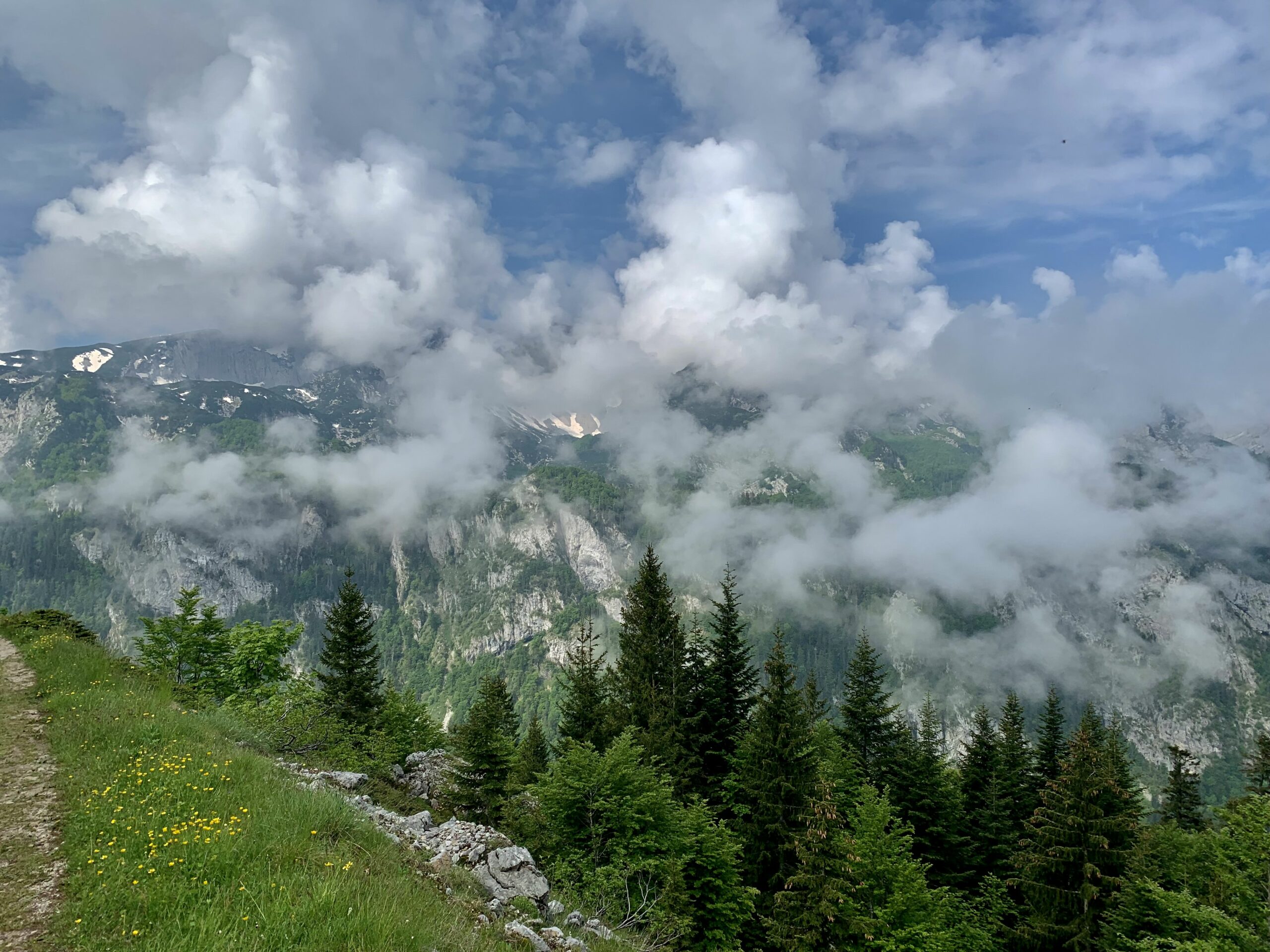
2. Hike To Lake Trnovačko (Trnovačko Jezero)
Another great hiking option that is not as treacherous or as weather-dependent as the Maglic peak climb, is the hike to Lake Trnovačko (Trnovačko Jezero). However do be aware that Lake Trnovacko is located in Montenegro, so bring your passport and one euro per person for the local ranger.
The hike starts from the exact same position as the Maglic peak climb does and is a well marked path all the way to the lake. The hike starts off with a walk along the mountain ridge with gorgeous views of the valley and neighboring mountains with clouds beneath you. Then you will descend into the valley until you reach an open grass plain. After walking along the grass plain for about a kilometer or so, you will again ascend into the forest and follow the path until you reach the lake.
When you arrive at the lake the local ranger will stamp you in to Montenegro and you will hand him your 1 euro coin. In total, its about 6-9 km and it will take you 2-3 hours to reach Lake Trnovačko from the parking spot. Count on a full day trip when hiking Lake Trnovačko in order to have sufficient time at the lake and stops on the hike to the lake. Make sure you leave your hotel no later than 9 am.
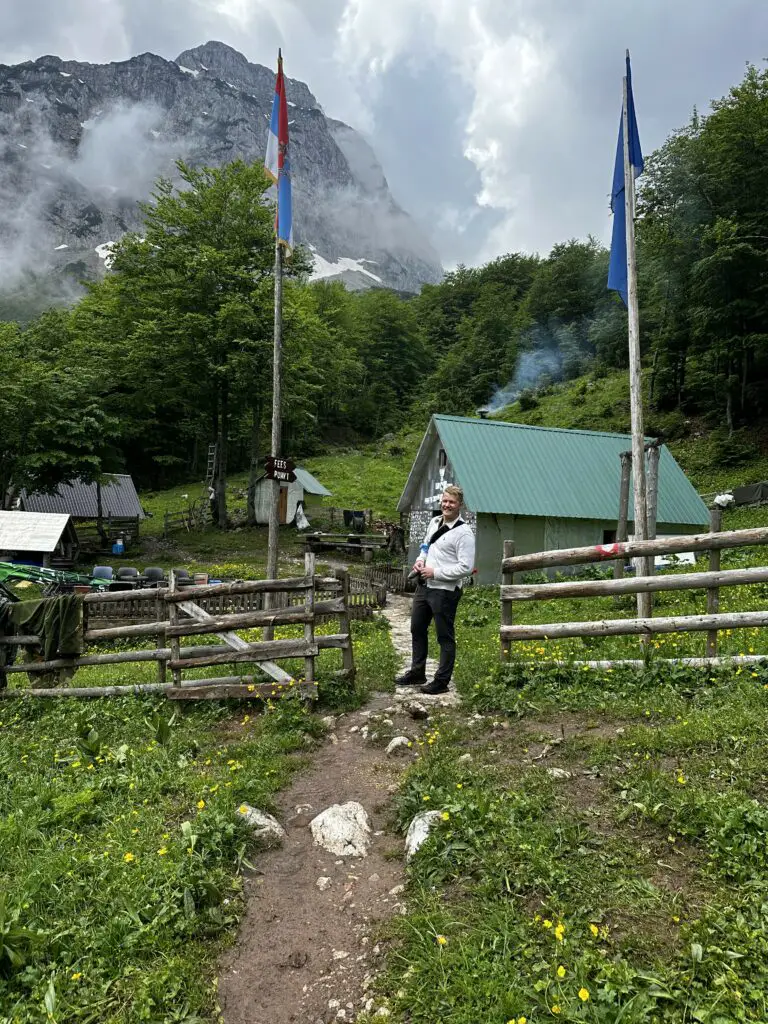
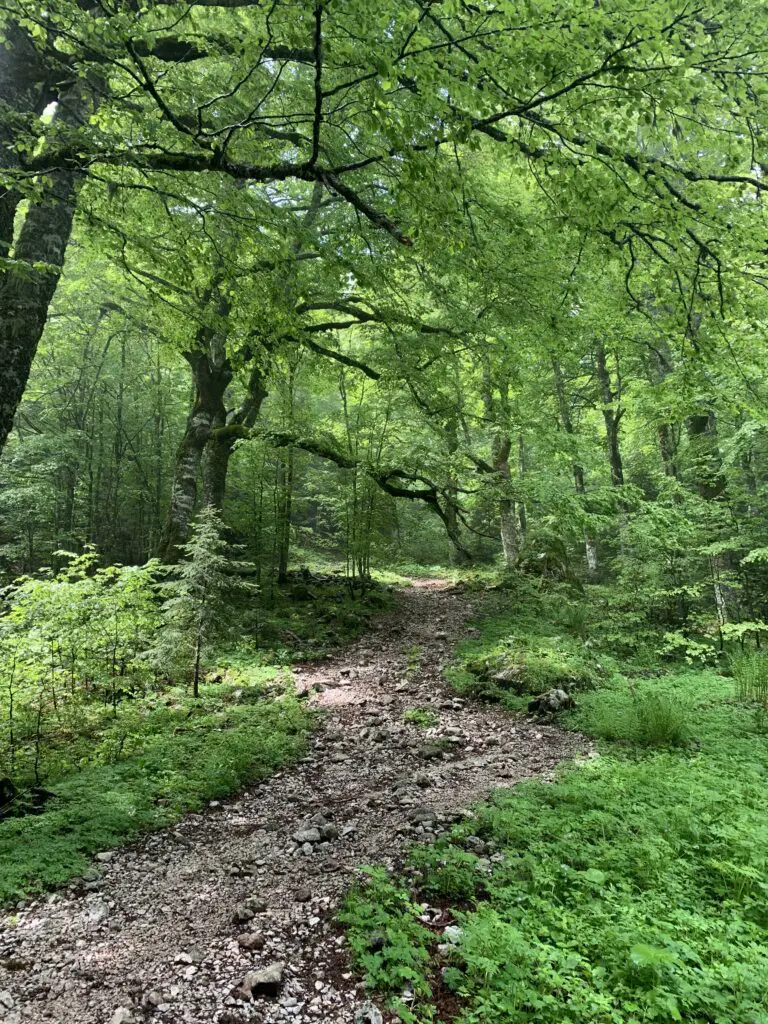
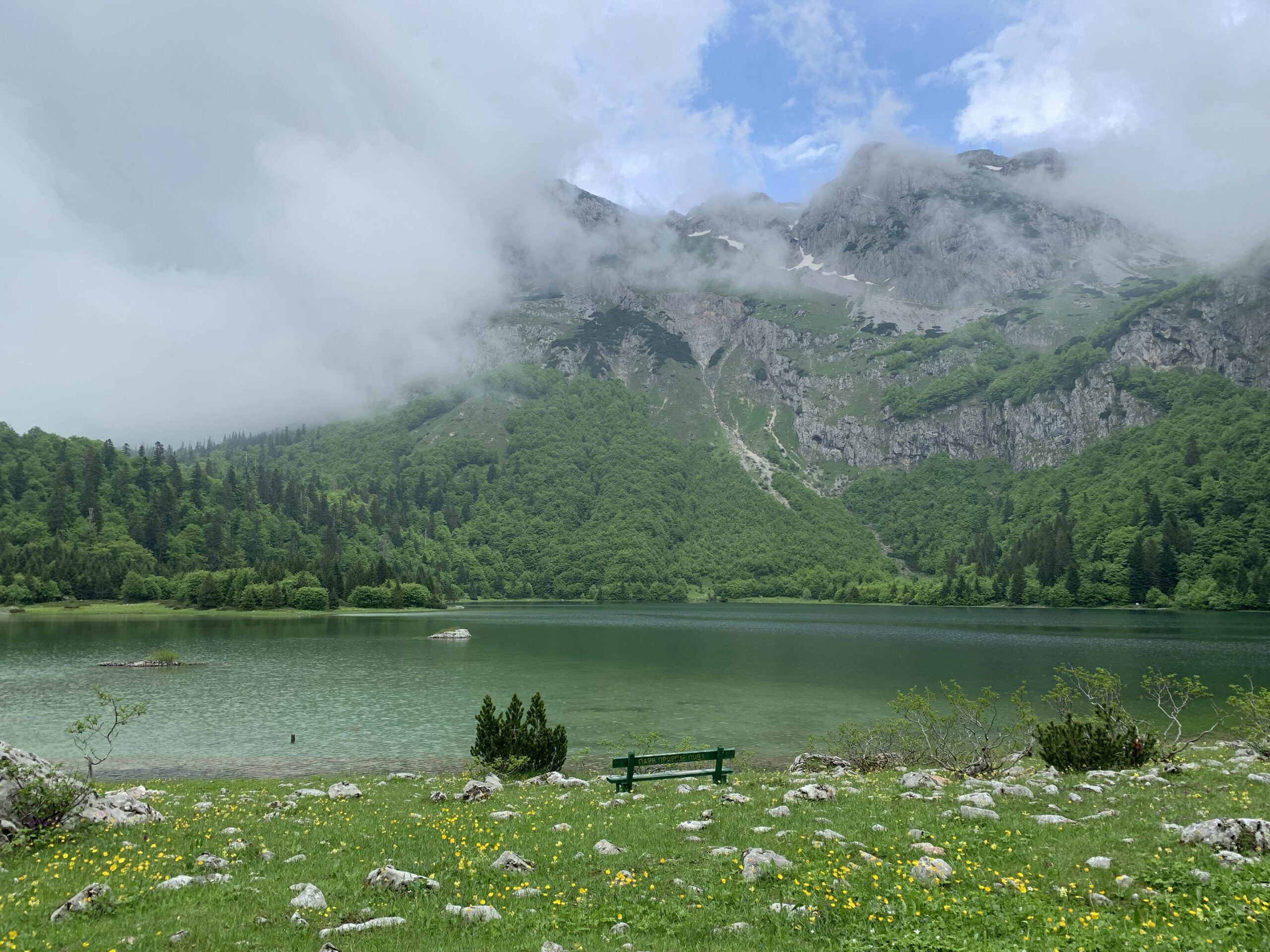
3. Memorial Complex to the Battle of Sutjeska
One thing that should be on top of your list when visiting Sutjeska National Park is the Memorial Complex to the Battle of Sutjeska. This impressive and huge memorial with its two 20-meter wings was designed by the Serbian sculptor Miodrag Živković to commemorate the Battle of Sutjeska, mentioned above, which took place during World War II in 1943. The mere size of the Memorial set against the backdrop of towering peaks makes this site impressive, and the best thing, you will have it almost completely to yourself, few tourists venture out to these remote parts of Bosnia, which makes your experience of the place all the better.
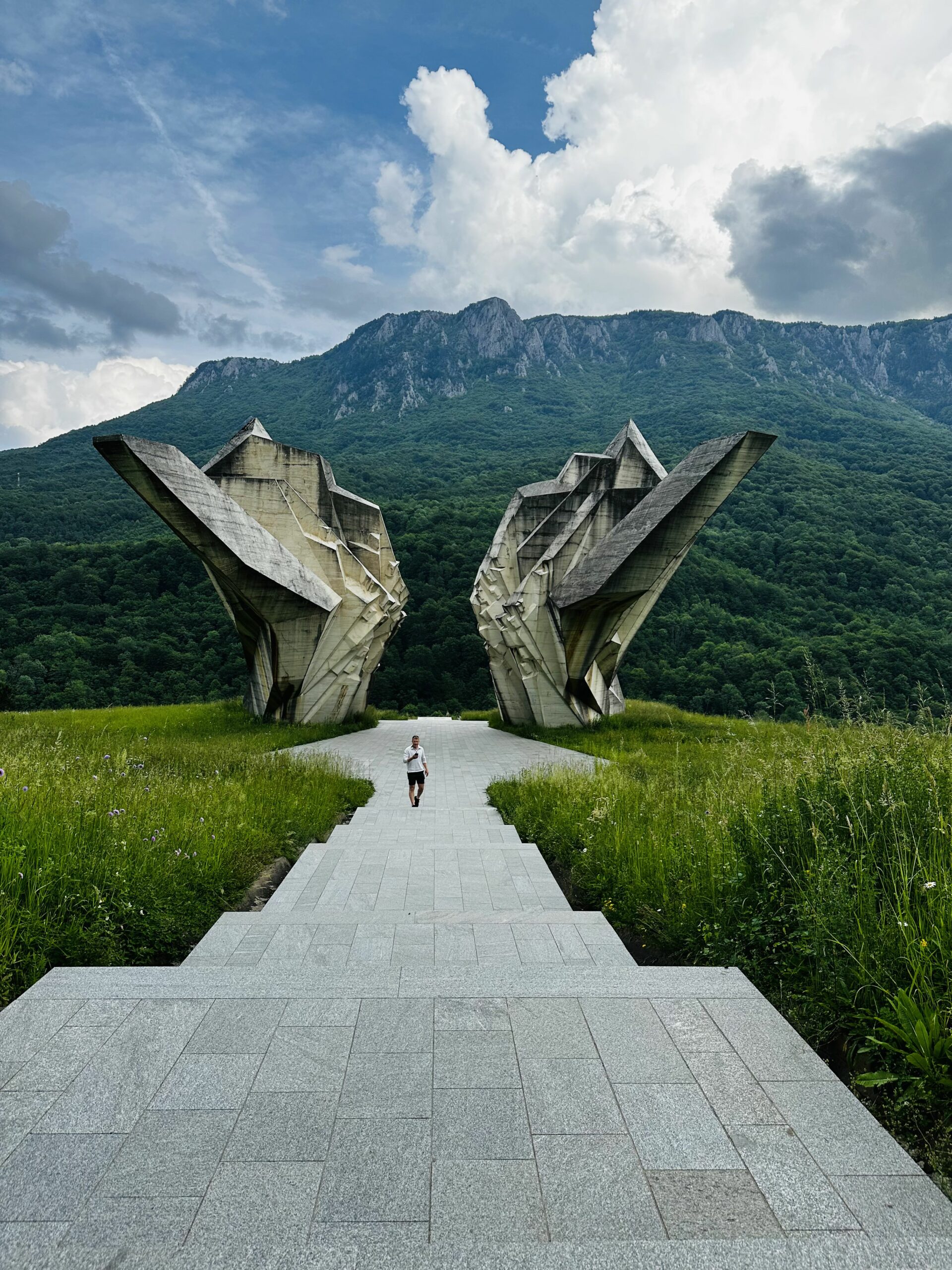
How Do You Get to Sutjeska National Park?
Driving is the most convenient way to reach the park From Sarajevo, the capital city of Bosnia and Herzegovina, it’s approximately a 2-hour drive. I personally, drove from Mostar to Sutjeska National Park, and it took us about 2 hours and 15 minutes. To be honest, I wouldn’t recommend using any other means of transportation than a car before visiting Sutjeska National Park. If you can, get a 4×4 otherwise a 4×2 will do just fine.
Where To Stay
Me and my wife stayed at Green Villas Tjentiste during our stay in Sutjeska National Park and we thoroughly enjoyed it. The rooms are simple but clean and affordable. The host Milan has a lot of knowledge of the surrounding areas and can help you find a guide, should you want one. There is also a restaurant situated next door where you can have lunch or dinner. They also sell their homemade jam which is absolutely delicious!
Conclusion
Visiting Sutjeska National Park is best done during the summer months of June to August. It’s a wild and fascinating place, to which few tourists make the journey. So if you want an off-the-beaten-path place in Bosnia make sure to visit the Sutjeska National Park, you will experience what most don’t get, and is well worth the detour from the regular tourist sites.
